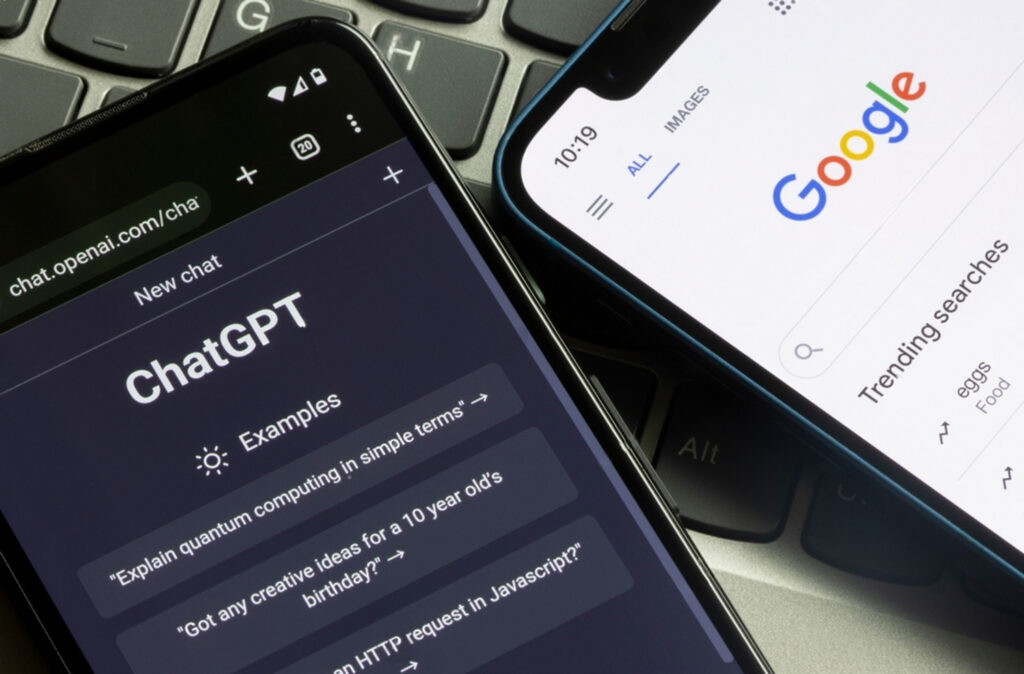When ChatGPT reached one million users in just five days, it became clear that the way people search for information was changing. At the same time, how AI systems identify and reference content started evolving as well.
Since then, I’ve focused on understanding what truly drives visibility in tools like ChatGPT. Not by chasing shortcuts, but by applying solid SEO principles that help content become more understandable, credible, and usable for AI models.
Earning placement in these responses isn’t about tricks. It comes down to clarity, structure, and trust. Content that directly answers real questions, follows a logical format, and reflects expertise is far more likely to be included.
In this guide, I’ll break down the strategies that have helped SaaS SEO teams consistently get cited in ChatGPT’s outputs. These approaches are rooted in what already works in search, but adapted for how AI-driven platforms evaluate content today.
How ChatGPT Selects and Prioritizes Content
Unlike traditional search engines, ChatGPT doesn’t rely on keyword rankings or backlink counts. It doesn’t scan the top results on page one. Instead, its responses are generated based on patterns learned during training and, when browsing is enabled, real-time access to sources via Bing.
When ChatGPT references a source, it’s typically because the content is well-structured, trustworthy, and easy to interpret. Content that demonstrates clarity, credibility, and relevance is more likely to be included in AI-generated answers.
Here are the key factors that influence what ChatGPT chooses to surface:
Authority signals: Content cited by established publishers, reputable experts, or trusted platforms like Reddit, G2, or Quora tends to carry more weight.
Information quality: Content with accurate, well-researched insights, especially when supported by original data, case studies, or unique frameworks—has a higher chance of being referenced.
Content structure: Clear formatting, logical headings, short paragraphs, and easily scannable sections help AI systems interpret and use the information effectively.
Engagement indicators: While ChatGPT doesn’t track bounce rates, it learns from patterns used by engines like Bing, which do. High engagement, time-on-page, and user interaction indirectly impact visibility.
Technical accessibility: Fast-loading, mobile-optimized, schema-enhanced websites that minimize reliance on JavaScript are easier for AI tools to crawl and understand.
Reputation across the web: Mentions in online communities, third-party reviews, and expert-curated lists signal trust and increase the likelihood of inclusion.
Did You Know?
ChatGPT has a bounce rate of 32.14%, indicating that users tend to stay engaged when they receive clear and relevant answers.
ChatGPT vs. Google
Google presents a list of ranked web pages based on factors like relevance, authority, and backlinks. ChatGPT, on the other hand, now receiving over 5.2 billion monthly visits, generates its own responses, referencing sources it considers credible and trustworthy. To be included, your content must go beyond keyword optimization. It needs to be structured, accurate, and authoritative enough to be cited directly within an AI-generated answer.
To stay competitive in AI-powered environments like ChatGPT and Bing Chat, it’s essential to evolve how your SEO works. Traditional tactics alone aren’t enough. You need content that’s not just optimized for keywords, but structured, credible, and clear enough to be referenced directly in AI-generated responses.
That’s where we come in.
At Xzio, our Search Engine Optimization services are built to help your content perform in both traditional and AI-driven search platforms. We focus on aligning technical SEO, high-value content creation, and strategic authority-building, so your brand doesn’t just rank, it gets cited.
Want to Rank on ChatGPT in 2025? These 6 Strategies Can Help
These strategies are grounded in real-world results across different industries and content types. They reflect what ChatGPT actually references, content that is accurate, well-structured, and built on credibility. The focus is on helping you create material that stands out as a trusted, reusable source in AI-generated responses.
1. Create Content That ChatGPT Recognizes as Credible and Valuable
To be cited by ChatGPT, your content must deliver more than surface-level information. The system favors original, evidence-based material that demonstrates subject-matter expertise and adds something new to the conversation.
Focus on delivering real value through:
Proprietary research – Share original data from surveys, internal analyses, or industry benchmarks.
Case studies – Showcase client outcomes, detailing your approach, results, and lessons learned.
Frameworks and models – Introduce new ways to solve common problems or organize complex information.
Equally important is understanding user intent. Reverse-engineer what your audience is trying to accomplish, whether it’s learning a concept, comparing solutions, or evaluating a purchase, and shape your content accordingly.
Avoid thin or derivative content. When your work is both insightful and evidence-backed, it increases the chances of being cited as a reliable source in ChatGPT’s responses.
2. Make Your Content AI-Friendly by Focusing on Structure and Accessibility
Insightful content only works if AI systems can interpret and extract it effectively. That’s why content structure and technical accessibility are just as important as the information itself.
To improve readability and extractability:
Use question-based headers that align with how users naturally phrase queries.
Break up content into short, focused paragraphs with one clear idea each.
Leverage bullet points to highlight key takeaways and improve scannability.
Answer core questions directly, especially early in each section.
Write in natural language, making it easier for AI to understand context, tone, and intent.
| Effective Structure | Less Effective Structure |
|---|---|
| Clear, question-based headings | Vague or overly creative section titles |
| Short, concise paragraphs | Dense text covering multiple ideas |
| Bulleted lists for clarity | Long-form text without visual breaks |
| Direct answers to common questions | Indirect or unrelated tangents |
On the technical side:
Implement schema markup, especially FAQPage, HowTo, and Article schemas to help AI understand your page’s structure and purpose.
Use a table of contents in long-form content to aid navigation for both users and crawlers.
Ensure mobile optimization and fast loading speeds, as slow or poorly responsive pages increase bounce rates and decrease engagement, both of which are indirect signals used by search engines and AI systems.
Avoid JavaScript-heavy elements or content hidden behind tabs that can’t be easily rendered or indexed.
Additionally, consider embedding interactive elements like polls, charts, calculators, or short videos. These features boost engagement and time on page, indirect signals that indicate content quality and usefulness to AI models.
Use AI to Scale Technical Work
Tools like ChatGPT or Schema Markup Generator can help automate schema writing, meta descriptions, and technical audits.
3. Strengthen Your Brand’s Reputation Beyond Your Own Website
ChatGPT doesn’t assess your content in a vacuum. It also factors in how visible and credible your brand appears across the broader digital landscape. In other words, content quality alone isn’t enough, brand authority plays a critical role in whether your content is referenced.
To build that authority, focus on increasing the credibility signals tied to your brand:
Expand Your Presence on Trusted Platforms
Earn mentions in reputable industry outlets, analyst reports, or relevant news stories. Being referenced by respected sources reinforces your expertise.
Write for established blogs or trade publications, but prioritize quality over quantity. Contribute helpful insights that speak to your niche, rather than publishing promotional pieces.
Encourage Third-Party Validation
Trust is often built by others talking about you. Encourage external validation by:
Collecting verified reviews on platforms like G2, Capterra, Trustpilot, or Google.
Participating in online communities such as Reddit threads, Quora discussions, or Slack groups where your target audience actively seeks solutions.
Joining expert roundups or interviews where you can share unique perspectives and demonstrate thought leadership.
Appearing in comparison posts or affiliate listicles, especially those that help users evaluate tools or services in your category.
The more your brand shows up in credible, third-party contexts, the more likely AI systems are to treat your content as a reliable source when generating responses.
Social Engagement Can Boost AI Visibility
ChatGPT doesn’t analyze social feeds, but Bing does. When your content performs well on platforms like LinkedIn, Reddit, and X, it sends engagement signals that can help increase your visibility in AI-generated responses.
4. Keep Your Content Updated to Stay Visible in AI Results
Outdated content is unlikely to be referenced by tools like ChatGPT. These systems prioritize material that reflects current information and relevance. If your page includes broken links, old data, or outdated references, it sends the wrong signals.
Keeping your content up to date improves both user experience and AI credibility. Fresh content is seen as more useful, more accurate, and more likely to be cited.
Practical ways to keep content fresh:
Audit and update high-performing pages every three to four months
Replace old statistics with recent data from trusted sources
Add new case studies, updated screenshots, or recent trends from your industry
Align with changing search behavior:
Study language patterns in tools like AnswerThePublic or AlsoAsked
Monitor ChatGPT prompts, Reddit discussions, and niche forums for emerging questions
Keep an eye on how your competitors are getting cited and adjust your content accordingly
Content Refresh Checklist
Replace outdated statistics with credible, recent sources
Add current examples, visuals, or product updates
Fix any broken internal or external links
Rewrite intros or headings to reflect new user search behavior
Review and update schema markup or structured data
5. Make Sure Your Content Is Indexed by Bing
Since ChatGPT relies on Bing to fetch real-time information, getting your site properly indexed by Bing is essential if you want your content to appear in AI-generated answers.
Begin by setting up and verifying your website in Bing Webmaster Tools. This gives you direct insight into how Bing crawls and understands your site.
Here are the key steps to follow:
Submit your XML sitemap to ensure full crawl coverage
Regularly monitor crawl errors and indexing status
Double-check that your canonical tags and robots.txt file are not blocking important pages
Fix any technical issues that may prevent Bing from accessing or rendering your content
Even if your Google performance is strong, overlooking Bing can limit your visibility in AI platforms like ChatGPT. We’ve seen cases where simply improving Bing indexation led to a noticeable increase in citations and visibility in AI responses.
Bing Powers ChatGPT’s Real-Time Knowledge
If your site isn’t indexed by Bing, it’s unlikely to be included in ChatGPT’s responses. Ensuring proper indexing is a foundational step in making your content discoverable in AI search.
6. Monitor Performance and Refine Your Strategy
Visibility in ChatGPT isn’t a one-time win. It requires consistent tracking and iteration as AI-driven search continues to evolve. Instead of guessing what works, build a system to measure your presence and make informed improvements over time.
Here are key ways to track performance:
Run keyword-based prompt tests regularly to see if your content appears in ChatGPT responses
Use AI citation tracking tools to monitor where and how often your content is being referenced
Review referral traffic from AI assistants using your analytics platform to understand engagement
When analyzing results, focus on metrics that reflect both visibility and value:
Citation frequency — how often your brand or content appears in relevant responses
Mention context — whether your content is cited accurately and in a positive or authoritative way
Conversion outcomes — how well traffic from AI sources aligns with your business goals
With large language models becoming an integrated part of the search journey, having a reliable feedback loop helps you stay ahead. The more proactive you are in tracking and adjusting, the better your chances of maintaining visibility and driving meaningful results.
Why Your Brand Needs to Show Up in ChatGPT
ChatGPT is rapidly becoming a central gateway for how people search, learn, and make buying decisions. With over 5 billion monthly visits and deep integrations into platforms like Microsoft Copilot and Bing Chat, it now acts as an AI layer between your brand and your audience.
When your content is cited in a ChatGPT response, you’re not just appearing in search results, you’re becoming part of the answer itself. This placement carries more weight than a traditional search listing and offers several key advantages:
Faster trust-building — Being cited positions your brand as an authority, not just another clickable link
Shortened decision paths — AI-driven responses reduce the need for users to scan multiple sources
Ongoing visibility at no extra cost — Once referenced, your content may continue appearing across countless queries
Today’s visibility in ChatGPT is tomorrow’s competitive edge. Brands that act now are gaining presence in an emerging channel where attention is still underpriced. Those that delay may find themselves overshadowed by faster, more adaptable competitors who are already shaping their position in the AI-driven discovery landscape.
What to Do Next to Boost Your Visibility in ChatGPT
Putting It All Together: A Smarter Path to ChatGPT Visibility
To recap, here are the six core strategies that drive visibility in ChatGPT:
Create original, high-trust content using research, case studies, and unique insights
Structure for AI clarity with clean formatting, schema markup, and fast-loading, mobile-optimized pages
Build brand authority through expert contributions, verified reviews, and credible third-party mentions
Keep content current by regularly updating key pages with fresh data, examples, and relevant trends
Ensure Bing indexing so your content can be discovered and referenced by ChatGPT
Track performance over time by monitoring citations, AI-driven traffic, and query visibility
Improving your AI search presence doesn’t require a full content overhaul. It starts with small, strategic steps applied consistently. Begin by identifying high-impact opportunities with minimal lift. For example:
Refresh one high-traffic article each week with current stats and improved structure
Add or refine schema markup on one core landing page per month
Schedule quarterly outreach for guest posts, expert roundups, or affiliate inclusion
Allocate time monthly to check for ChatGPT citations and analyze which pages are getting picked up
If you’re not being referenced yet, review your content’s clarity, authority, and structure. Identify patterns in the pages that perform well and apply those lessons to the rest of your content.
And remember, these improvements don’t just boost visibility in ChatGPT. They also increase your chances of being featured in other AI-driven tools like Perplexity, Claude, Copilot, and Gemini, each of which relies on similar signals of trust and clarity.
Search is evolving rapidly, but consistent, well-targeted actions can produce long-term gains. Focus on quality, structure, and authority, and you’ll position your content where it matters most, in the answers, not just the links.
Accelerate Your AI Search Growth with Xzio
At SimpleTiger, we help SaaS companies appear where their customers are asking real questions. Our Generative Engine Optimization (GEO) service is designed to extend your existing SEO strategy, not replace it. We take the proven foundations of traditional search and apply them in ways that increase visibility across AI-driven platforms like ChatGPT, Perplexity, Bing Chat, and Google SGE.
GEO is precise, scalable, and built for growth. Leveraging proprietary AI technology, we identify high-impact opportunities, monitor your presence across generative engines, and structure your content to ensure it’s accessible, trustworthy, and citation-ready.
If staying visible in the age of AI search is your priority, we can help you get there with a smarter, more strategic approach.
Start your GEO journey today — contact our team.



